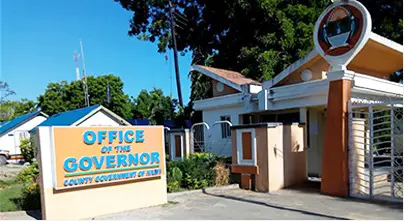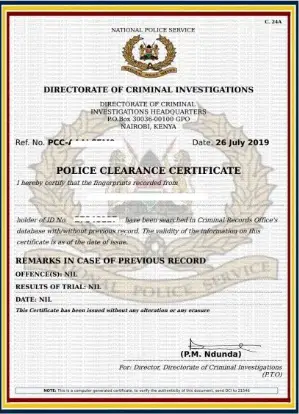Tana River County, nestled in the coastal region of Kenya, is a treasure trove of natural beauty, cultural diversity, and unique communities. Spanning over 35,375 square kilometers, the county is divided into various wards, each with its own distinct charm and significance.
In this article, we’ll take a closer look at the wards of Tana River County, highlighting their individual features, demographics, economic activities, challenges, and development initiatives.
a) Bura Sub County
1. Chewele Ward
Chewele Ward is known for its rich agricultural activities, particularly the cultivation of cashew nuts and maize. This ward is home to several villages, and its residents primarily engage in farming.
2. Hirimani Ward
Hirimani Ward boasts a scenic landscape with the Tana River meandering through it. Fishing and agriculture are the primary sources of livelihood for the people here, with maize and millet being the key crops.
3. Bangale Ward
Bangale Ward is recognized for its vibrant cultural scene, with various traditional dances and celebrations. Agriculture is the mainstay here, with crops like maize, beans, and sorghum being cultivated.
4. Sala Ward
Sala Ward is known for its diverse ethnic composition, with several communities coexisting harmoniously. Agriculture, trade, and small-scale businesses thrive in this area.
5. Madogo Ward
Madogo Ward is the gateway to the Tana River County, welcoming travelers with its beautiful landscapes. Subsistence farming, livestock rearing, and fishing are prevalent here.
b) Garsen Sub County
6. Kipini East Ward
Kipini East Ward is renowned for its proximity to the Indian Ocean and its picturesque beaches. Fishing and small-scale trade form the backbone of the local economy.
7. Garsen South Ward
Garsen South Ward is characterized by its lush vegetation, making it ideal for agriculture. The ward is known for growing cashew nuts, coconuts, and mangoes.
8. Kipini West Ward
Kipini West Ward is a haven for birdwatchers and nature enthusiasts, boasting diverse wildlife and bird species. Fishing, tourism, and agriculture are vital to the local economy.
9. Garsen Central Ward
Garsen Central Ward serves as the administrative hub of Tana River County. It’s a bustling commercial center where trade and government activities flourish.
10. Garsen West Ward
Garsen West Ward offers a blend of urban and rural lifestyles. Agriculture, livestock keeping, and small-scale businesses are prevalent here.
11. Garsen North Ward
Garsen North Ward features a mix of cultures and communities. Agriculture, livestock farming, and trade are key economic activities.
c) Galole Sub Counter
12. Kinakomba Ward
Kinakomba Ward is known for its close-knit communities and cultural diversity. Farming and small-scale businesses are the primary sources of income.
13. Mikinduni Ward
Mikinduni Ward is famed for its serene environment, attracting tourists interested in eco-tourism. Agriculture and fishing are essential to the local economy.
14. Chewani Ward
Chewani Ward is a blend of modernity and traditional practices. Agriculture, livestock rearing, and small enterprises thrive here.
15. Wayu Ward
Wayu Ward boasts a rich cultural heritage, with traditional music and dance being integral to the community. Agriculture, livestock farming, and trade are prominent.
Demographics and Population
Tana River County is home to a diverse population comprising various ethnic groups, including the Pokomo, Orma, and Mijikenda. The wards vary in population size, with Garsen Central Ward having the highest population due to its administrative significance.
Here’s a table showing the approximate population of selected wards:
| Ward | Population |
|---|---|
| Garsen Central | 45,000 |
| Kipini East | 20,000 |
| Sala | 12,500 |
| Wayu | 8,000 |
| Hirimani | 6,800 |
Economic Activities
The economic activities in Tana River County’s wards are closely tied to the region’s geography and natural resources. Agriculture, fishing, and small-scale trade are the predominant sources of income for residents across most wards.
Agriculture is the backbone of the economy in many wards, with crops like maize, millet, cashew nuts, and coconuts being cultivated. Livestock rearing, especially cattle and goats, is also common.
In the coastal wards, fishing plays a vital role, with various communities relying on the bounty of the Indian Ocean for their sustenance and income. Tourism is gradually gaining importance, thanks to the picturesque landscapes and diverse wildlife in the region.
Challenges and Development Initiatives
While Tana River County’s wards are rich in potential, they also face their fair share of challenges. These include:
- Flooding: Several wards, particularly those along the Tana River, are prone to seasonal flooding, leading to displacement and destruction of crops and infrastructure.
- Infrastructure: Many areas lack proper road networks, making transportation difficult, which hampers economic growth and access to essential services.
- Access to Healthcare: Some wards struggle with limited access to healthcare facilities, leading to health disparities among residents.
- Education: Educational facilities and resources are often inadequate, hindering the educational development of children.
Despite these challenges, various development initiatives are underway in Tana River County. These include road construction projects, investments in healthcare facilities, and efforts to enhance agricultural productivity.
Additionally, community-based organizations are working to promote education and environmental conservation.
In conclusion, Tana River County’s wards are a testament to the region’s diversity and potential. Each ward has its unique characteristics, challenges, and opportunities, contributing to the county’s rich tapestry.
With continued investment in infrastructure, education, and healthcare, these wards can thrive and contribute significantly to the development of Tana River County as a whole.



